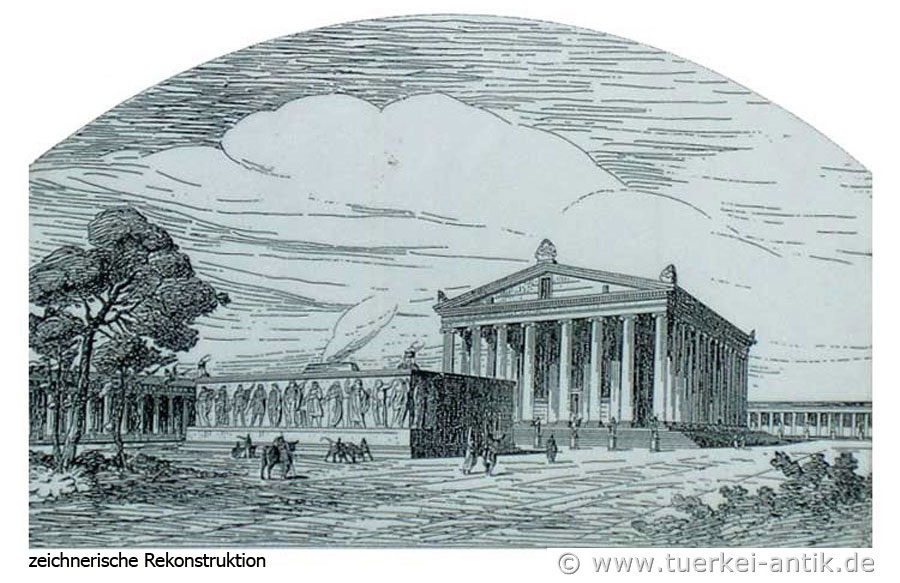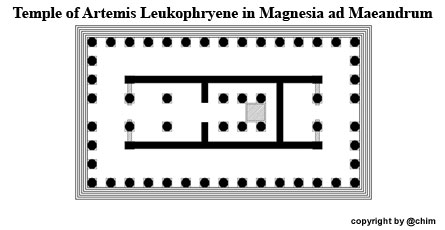 |
|
Ancient temples in Turkey Magnesia ad Maeandrum |
||||||||||||||||||||
 |
|
|||||||||||||||||||
|
||||||||||||||||||||
|
The predecessor of the Artemis temple of Magnesia from the end of the 6th century BC was considerably smaller than the temple built by Hermogenes from Priene. It was probably begun around 200 BC and completed in 130 BC. It became the fourth largest temple of the Hellenistic period in Asia Minor and the main work of Hermogenes.
The decoration of this temple was legendary. It was built entirely of marble and decorated with a 175 meter long frieze. |
||||||||||||||||||||
| Artemis | ||||||||||||||||||||
|
In Greek mythology, Artemis is the goddess of hunting, the forest, the moon and the guardian of women and children. She is one of the twelve great Olympic gods and therefore one of the most important deities of Greek mythology. She is the daughter of Zeus and Leto, and the twin sister of Apollo. She corresponds to Diana in Roman mythology. |
||||||||||||||||||||
| The history of Magnesia ad Maeandrum: | ||||||||||||||||||||
|
|
||||||||||||||||||||
|
|
||||||||||||||||||||
| The Temple Foundation | ||||||||||||||||||||
|
|
||||||||||||||||||||
|
|
||||||||||||||||||||
|
|
||||||||||||||||||||
| Photos: @chim | ||||||||||||||||||||
| Translation aid: www.DeepL.com/Translator | ||||||||||||||||||||
| Source: Wikipedia and others | ||||||||||||||||||||
|
|



